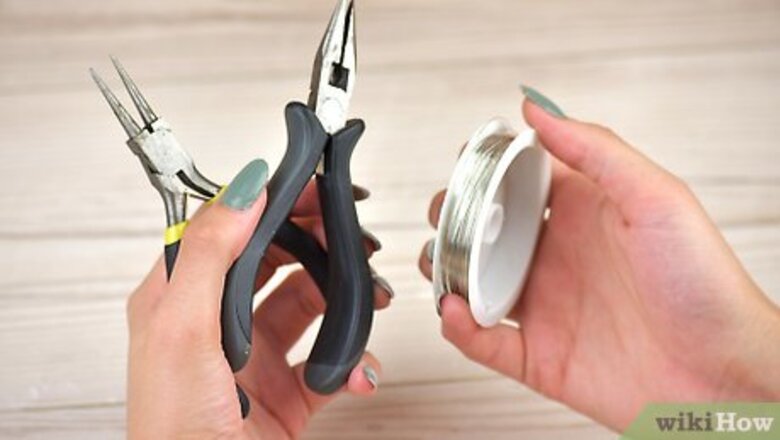
views
Getting Started With Jewelry Making
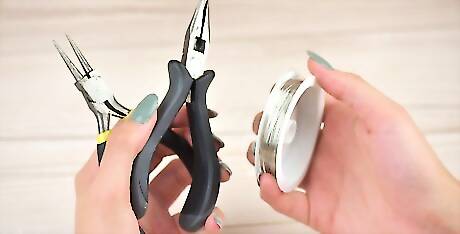
Purchase jewelry making tools. Depending on what kind of jewelry you plan to make, you’ll probably need some basic tools to complete your project. Some basic tools all beginners should consider having include: A variety of pliers – round nose pliers, chain nose pliers, step jaw pliers, bent closing pliers, and nylon jaw pliers A metal ruler that measures both centimeters and inches Wire cutters Practice wire, to practice bending and shaping you wire before you attempt to bend your more expensive wire for your actual project Peg boards for bending wire
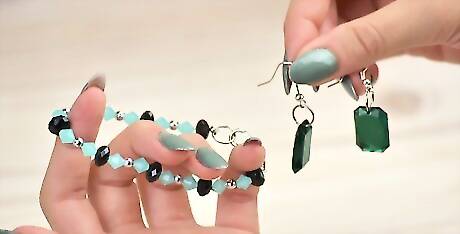
Pick out a specific jewelry project you want to try. Because there is such a variety in possible pieces of jewelry (necklaces, bracelets, earrings), made out of many possible materials (beads, wire, string, resin, paper, etc.), pick out a material and piece of jewelry you want to work on making. Find inspiration by visiting jewelry stores or looking online at social platforms, visual organizational websites, or jewelry retailer websites.
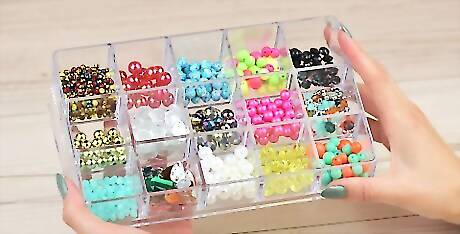
Buy a jewelry kit. For an easy transition into jewelry making, visit your local craft store and buy a jewelry making kit. Jewelry making kits provide you with basic supplies and tools that allow you to customize different jewelry pieces and make them all your own. Most kits come with some basic instructions with different jewelry ideas, but you can use your imagination to create whatever kind of jewelry you want. There are many variations of jewelry making kits depending on what specific kind of jewelry you want to make. For example, there are beading jewelry kits, stringing jewelry kits, and wire jewelry kits, just to name a few.
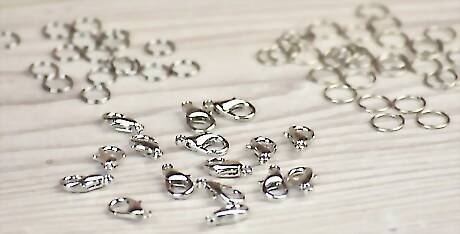
Purchase handmade jewelry supplies. Handmade jewelry can be crafted with many different kinds of supplies, but there are a few basic supplies that are used on most handmade jewelry pieces. Jewelry kits can provide you with general or project specific supplies, but if you plan to start making jewelry without using a kit, you need to purchase some supplies on your own. Consider buying some: Beads Jewelry wire in common gauge sizes (18, 20, and 22); 20 gauge is best for beginners Clasps and closures Jump rings
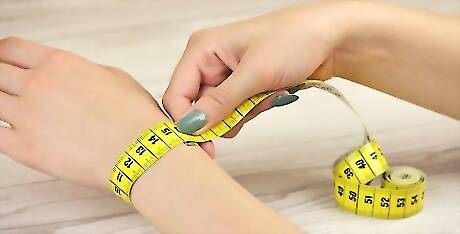
Become familiar with basic jewelry measurements. In order to determine how big or small you want your jewelry piece to be, familiarize yourself with some basic jewelry measurements. There are common, standard sizes for necklaces, and bracelets (depending on if the jewelry is for men or women), and how long you want the piece to hang. For example, different necklace styles are certain lengths. Chokers are about 14 – 16 inches in length, princess style necklaces are about 17 – 19 inches in length, and rope necklaces are about 34 inches in length and longer. Necklaces that fall just below the collar bone tend to measure about 17 inches for women, and about 20 inches for men. Common bracelet lengths measure about 7 inches for women, and between 8 – 11 inches for men.
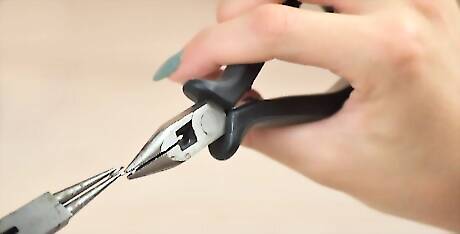
Learn some basic jewelry making skills and techniques. In order to begin the process of making your own jewelry piece, you must learn some basic skills and techniques in order to successfully complete your project. Common skills and techniques that must be learned include opening jump rings, cutting wire, wire working, stringing, and using jigs and pegs, just to name a few. To learn these different techniques you can read jewelry making books, search for tutorials, and take jewelry making workshops. Search online for instructions on how to make the the specific earrings, bracelet, ring, or other kind of jewelry you want to try making.
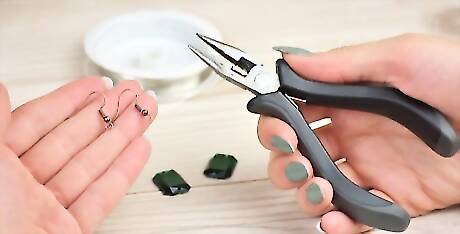
Assemble your required materials. Once you have a chosen jewelry project that you want to make, gather and assemble all of the needed materials. Again, your materials can come from a jewelry making kit, or you can research a style of jewelry, determine the level of difficulty, and then buy the necessary materials yourself. For example, in order to start making charm earrings, you first have to select the charms you want to use. Charms can be found online, at craft stores, or jewelry stores. Then you have to select your earring findings, which are the parts of the earring that fit through your ear piercing. When you are ready to begin making your jewelry, go over the instructions that you have acquired on how to make the jewelry piece.
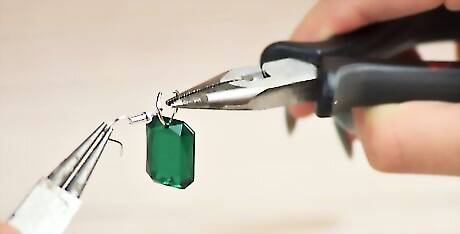
Practice the technique before you make the real thing. As mentioned earlier, for wire jewelry, having practice wire is a good idea to practice and conquer a jewelry making technique before you move on to bending and cutting your more expensive wire. That way, you get the hang of the technique with lots of repetition, so your final product is of high quality. No matter what kind of jewelry material you are using, always try to practice the technique first, before using your actual, precious jewelry materials. Thin, copper wire is always a good choice for practice wire.
Making Earrings
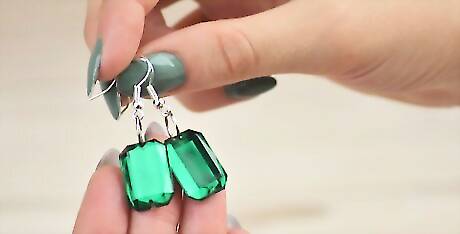
Try making Swarovski crystal earrings. These earrings are fairly simple to make, and only require two crystals for your charms, two jump rings, and two earring findings. You will also need a set of pliers to help open and close the jewelry pieces.
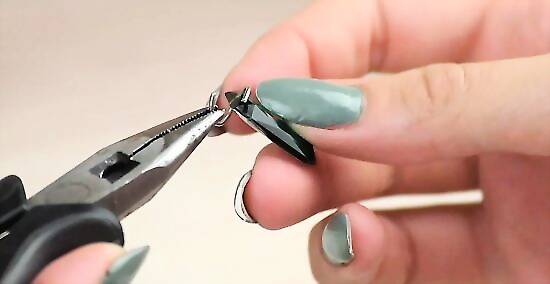
Add the crystals to the jump rings. Use your pliers to twist and open up the two jump rings. Feed the crystals onto the jump rings through the holes in the charms. Be sure that if you crystals have a distinct front and back side, that the front side will be showing forward once you close the jump ring and put on the earring. If not, you can always reopen the jump ring and turn the crystal around on the ring.
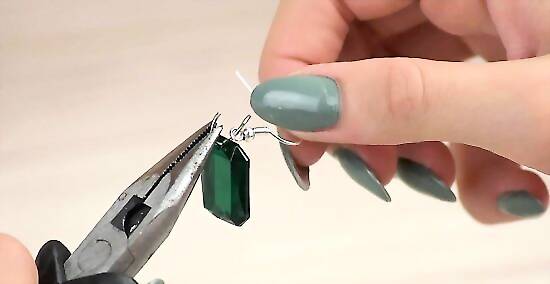
Add the earring finds to the jump rings. Once the crystals are on the jump rings, slide the earring findings onto the jump rings. You should be able to hold a jump ring and have both the crystal and earring finding hanging off. Use your pliers to close and secure the jump rings. This earring project can take less than five minutes, and at the end, you have a unique pair of beautiful earrings.
Making a Bracelet
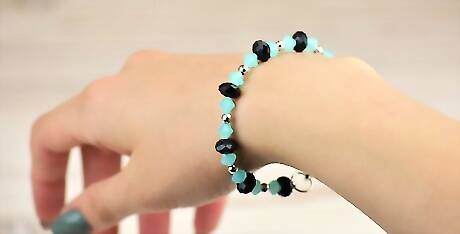
Try making a beaded bracelet. A simple beaded bracelet is a great way to begin making handmade bracelets. For this bracelet you will need beads of your choosing, beading wire, wire cutters, crimp beads, jump rings, and a closing clasp.
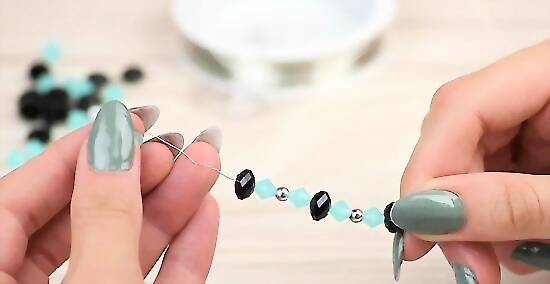
Add beads to your bracelet wire. Begin by stringing your beads onto the wire still attached to the spool. Keeping the wire attached to the spool allows you to change your mind about the length of the bracelet as you make it. Keep stringing on beads until you make the bracelet as long as you like.
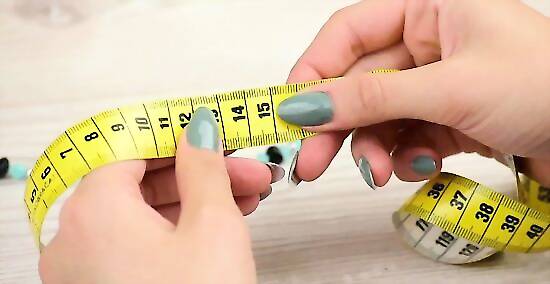
Determine your bracelet length. Figure out how much length the clasp and jump ring are going to add to your final product bracelet, take that into consideration, and remove some beads equivalent to that length.
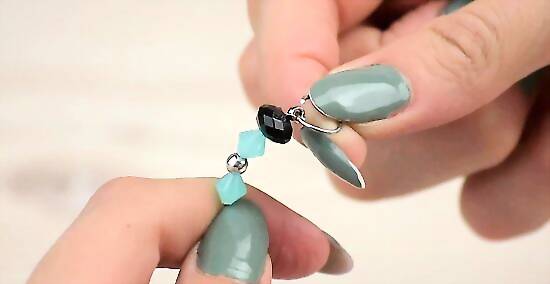
Add a jump ring to an end of your bracelet. Add on a crimp bead and a jump ring to the end of your bracelet. Leave yourself a bit of room on the end of the wire. Take the tag end of the wire and thread it back through the end crimp bead. You want the jump ring to be dangling on the wire loop.
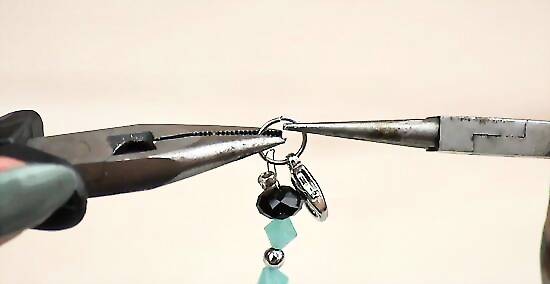
Secure an end to your bracelet. Keep threading the wire through the rest of the beads until the jump ring is pulled taut against the wire. Use your crimping pliers to clamp down on the crimp bead and secure the crimp bead. You can also trim away the excess wire near the crimp bead so you don’t get poked. Repeat this process with the other side of bracelet. Add a clasp to an end of the bracelet. Add a clasp onto one of the end jump rings by using pliers to twist and open a jump ring, and then feed the clasp onto the ring. Close the jump ring, and connect your bracelet together. This same technique can be used with longer wire and more beads to make a simple necklace.
Making a Ring
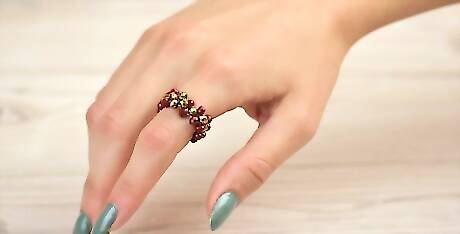
Try making a beaded ring. A beaded ring is a really easy and simple project for a beginning jewelry maker. For a beaded ring, you will need some small, glass, seed beads, nylon fishing line to serve as your ring thread, and some bead glue.

Feed your beginning beads onto your ring thread. Begin with approximately 10 – 12 inches of ring thread. Feed on three small glass beads in any color of your choosing. When the three beads are on the thread, hold the two ends of the thread together and allow the beads to fall to the middle of the thread.
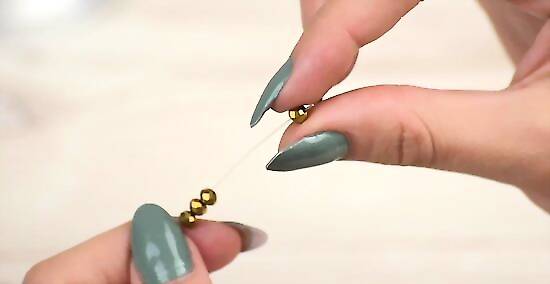
Thread the connecting bead. Add a fourth bead to one of the thread ends, but do not let it fall down to meet the rest of the beads. Instead, take the other end of the ring thread, and feed it through the top of the bead. The two bracelet threads should now be coming out from opposite directions from the bead. Pull the threads outward in opposite directions to string the bead into place. This fourth bead will act as a bridge between the other beads.

Continue adding beads to the ring thread. Add one bead each to the different thread ends. Then add a third bead to act as the connecting, bridge bead. Like you did before, feed both ends of the ring thread through the bead (threading the thread in opposite directions), and pull the thread ends away to secure the bead. Keep adding beads in this manner until the length of the ring becomes long enough to wrap around your finger. You can intermittently check the length of the ring by wrapping it around your finger. Just make sure you hold onto the loose end of the ring.
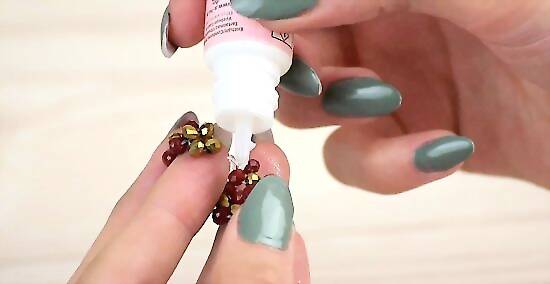
Connect the ends of the ring together. Pass the two loose ends of the ring thread through the hole in the very first bead of the ring. Consider repeating threading the ring thread through the bead to make the connection more secure. Tie the thread ends in a knot to finish the ring. Trim off any excess fishing line thread, and consider adding a drop of glue to the thread ends to make sure they stay connected.



















Comments
0 comment